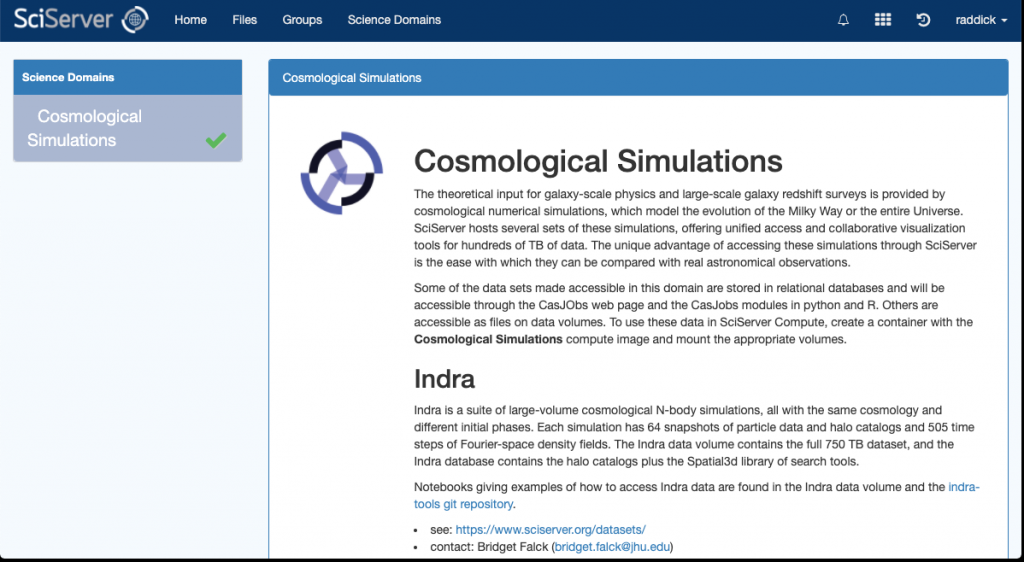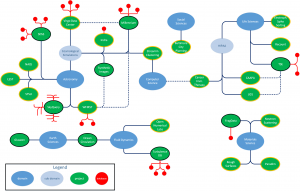
Science Domains
SciServer supports a wide variety of science use cases, and our new Science Domains feature helps you get the most out your science.
When you join a Science Domain through the SciServer Dashboard, you immediately gain access to all public resources – such as databases, data volumes, and virtual computing environments – relevant to your research.
Currently we have one science domain defined: Cosmological Simulations. Joining it will give you instant access to more than 20 datasets containing full results of the Millennium and Indra cosmological Simulations.
To see the available Science Domains, go to your SciServer Dashboard and click the Science Domains link. If you are already logged in to SciServer, click here to open a new tab directly on the Science Domains page.
To join a Science Domain, click on its name from the list, then click the Join button below its description in the main panel.
In the near future, we will create science domains for more areas, which will include an Astronomy domain that will contain all the SDSS databases.
Cosmological Simulations
The Cosmological Simulations science domain gives you access to the results of several modern numerical simulations of structure formation: Indra, related products from the Virgo consortium, and the Millennium Simulations.
The theoretical input for galaxy-scale physics and large-scale galaxy redshift surveys is provided by cosmological numerical simulations, which model the evolution of the Milky Way or the entire Universe. SciServer hosts several sets of these simulations, offering unified access and collaborative visualization tools for hundreds of TB of data.
The unique advantage of accessing these simulations through SciServer is the ease with which they can be compared with real astronomical observations.
For more information on what you can access through the Cosmological Simulations science domain, see the cosmological simulations section of the Hosted Datasets page.
Publications
We also maintain a growing list of SciServer publications.
Other Science Support
SciServer comprises several scientific projects that have made their full datasets available in a common format and through a common set of interfaces. Many other projects will soon make their data available here as well.
The diagram shows SciServer’s projects, both those that currently make their datasets available through the SciServer environment and those that will in the future. Green ellipses mark specific projects, and red circles show those project’s databases. Blue ellipses map out which science domains these projects address. Click on the diagram for a larger view.
The list below gives the science domains addressed by SciServer’s current and future projects. Click on any of the icons for more information about that domain.


Astronomy

Turbulence

Oceanography
Materials Science

Manufacturing Science

Genomics

Soil Ecology





